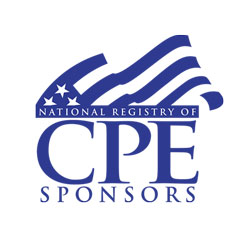Buy-Side Financial Modeling
Learn the "Buy-Side Mentality"
Meet the Instructor: Brett Caughran (Maverick, DE Shaw and Citadel) will walk you through modeling techniques typically developed over several years on the job.
Taught by an Experienced Hedge Fund Professional
Led by a hedge fund veteran with experience at top buy-side firms, this course is a deep-dive into buy-side modeling that provides tools, frameworks and over a decade of industry experience for students to learn from.
Develop Buy-Side Modeling Intuition and Frameworks
Learn to build buy-side models, understand why the buy-side model is the backbone of investment decisions and how it differs from the sell-side and investment banking model.
Understand Buy-Side Modeling Applications
Learn the importance of tracking and incorporating company-specific key drivers into your models and how to set up your model to develop an actionable perspective on stock valuation.
What You Will Learn
Process Driven Investing
Understand the role of modeling as a tool for thesis development in the investing process. You’ll learn about:
- “Alpha load” and the quest for outperformance
- The model as the backbone of the investing process
- Stock selection frameworks
- The typical model use cases (i.e. “Is this a good or bad business”, “Will this stock beat or miss earnings?, etc.)
Buy-Side Model Construction
Learn what a PM wants to see from a buy-side model and how that differs from a sell-side model. Starting with a “scratch build” using TSLA, you’ll learn about:
- The upside of bespoke modeling
- The raw ingredients needed for your model
- Architecture to handle a torrent of earnings prints, news flow and market moves.
Analyzing a Business
Learn how buy-side Analysts go about the process of understanding a business in depth. You’ll learn:
- The good business / bad business framework
- The importance of key driver identification and build your model around what actually drives value
- Unit economics (i.e. “how does this business make money”)
- Cost structure analysis, and incremental margins
Buy-Side Forecasting Frameworks
Gain a general orientation to forecasting and learn key forecasting frameworks including:
- Growth stack forecasting, mix accelerator, comp waterfall, box replicator, ramp curve, creative lags, mid-Cycle, data correlations
- Revenue forecasting & sustaining growth
- Approaches to expense forecasting
- The role of company guidance and investor relations in your modeling process.
Buy-Side Valuation
Learn the factors that influence valuation, from growth, business momentum, business quality, capital deployment/structure, and terminal value stability.
- The dichotomy of the DCF and the messy reality of equity pricing
- The roles of multiples in buy-side investing
- The core formula for price target derivation
- Normalized earnings analysis
Buy-Side Thesis Development
Here, we will move from the model towards a thesis. You’ll learn:
- How buy-side analysts use the model to generate outputs that answer “what is the risk/reward”, “what is the upside / downside”?
- How the model can clarify thoughts on the FEV framework (fundamentals, expectations, and valuation
- What is baked in? What do we believe is true / what is the expectations gap?
- Evaluating a view on variance versus consensus
Who Should Take This Course?
- Aspiring Hedge Fund Analysts
- Upcoming Portfolio Managers
- Seasoned Asset Managers
- Sell-side to Buy-Side Career Switchers
- Public Equity Investors

Get the Buy-Side Financial Modeling Certification
Trainees are eligible to take the WSP Buy-Side Financial Modeling Certification Exam upon completion of the Buy-Side Financial Modeling course. Those who complete the exam and score above 70% will receive the certification. The exam is a challenging online examination covering the most difficult concepts covered in the Buy-Side Financial Modeling course.
Course Samples
| Prereq 1 | Accounting Crash Course |
| Prereq 2 | Excel Crash Course |
| Prereq 3 | Analyzing Financial Reports |
| Prereq 4 | Non-GAAP Reporting |
| Prereq 5 | Basic Financial Modeling |
| Prereq 6 | Valuation & DCF Modeling |
Program Prerequisites
This course presumes knowledge of basic financial & valuation modeling, accounting, financial reporting and Excel. Students with limited experience in these areas can enroll in these prerequisite courses during checkout at special prerequisite pricing.
Course TOC
Course Highlights
Taught by a Top Hedge Fund Manager
Brett Caughran (Maverick, DE Shaw and Citadel) will walk you through modeling techniques typically developed over years on the job.
Used by Leading Buy-Side Investment Firms
Go through the same training program that our hedge fund, family office and pension fund clients use to train their analysts.
Real Case Studies and Excel Models
This course uses real financial filings and Excel models to show you how buy-side valuation is done in the real world.
In-Lesson Instructor Support
Have a question on course content? Communicate directly with the instructor by asking questions throughout the course.
Learner Feedback


